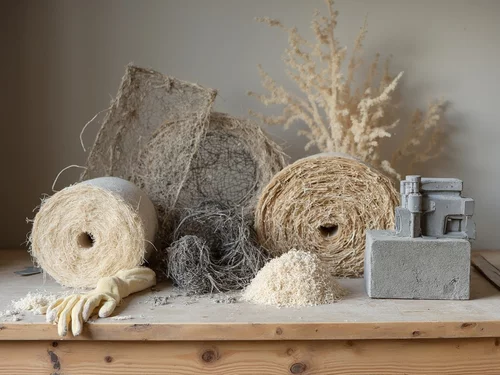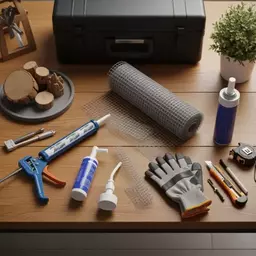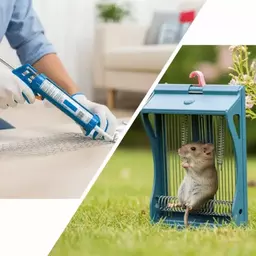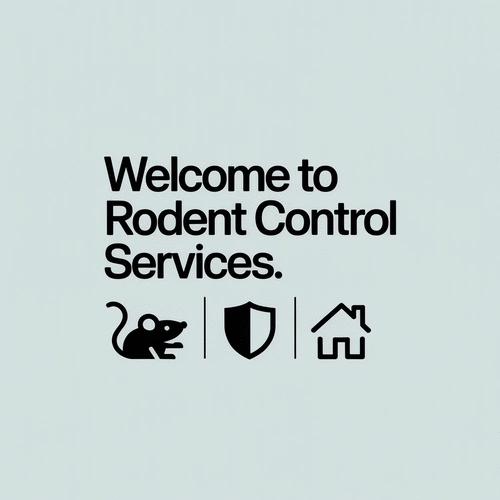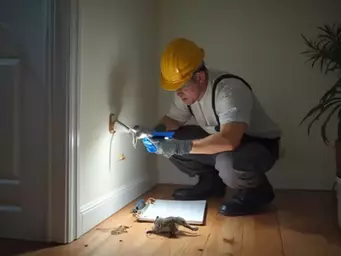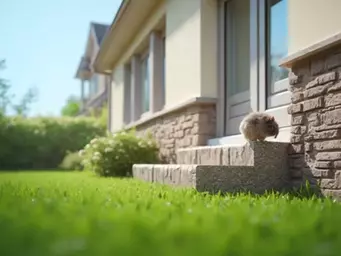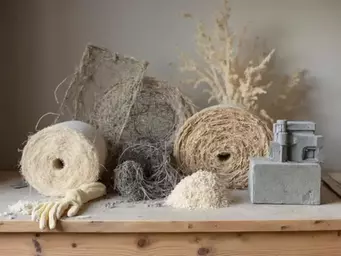Investing in rodent-proofing your property is more than just a preventive measure; it’s a strategic move towards long-term safety, comfort, and financial savings. Are you ready to discover how to safeguard your space effectively?
What You Will Learn
- Rodent-proofing helps preserve the integrity of your property and enhances overall safety.
- Investing in preventive measures can save you money on future repairs and pest control services.
- Choosing the right rodent-proof materials is crucial for long-term effectiveness.
- Understanding the cost-benefit analysis can help you select materials that provide lasting protection.
- Eco-friendly solutions mitigate health risks while effectively excluding rodents.
- Regular inspections and habitat modifications can significantly reduce rodent attraction.
Rodent-Proofing Materials: Durability, Cost, and Environmental Impact
An overview of essential considerations when choosing materials for effective and sustainable rodent exclusion.
Material Comparison: Durability & Cost
- ✓ Steel Wool/Copper Mesh: Effective, but may need frequent replacement (low durability)
- ✓ Stainless Steel Fabrics: High durability, moderate cost (excellent long-term value)
- ✓ Hardware Cloth: Good durability, low-to-moderate cost (versatile)
- ✓ Concrete/Mortar: Very high durability, varying cost (permanent solutions)
Cost-Benefit Analysis: Prevention vs. Aftermath
Cost of Infestation:
- ✖ Expensive repairs (chewed materials)
- ✖ Recurring pest control services
- ✖ Potential health-related expenses
Cost of Prevention:
- ✓ Initial material investment
- ✓ Minimal maintenance (reduces future costs)
Environmental & Safety Considerations
Chemical Repellents:
- ✖ Potential health & safety risks
- ✖ Environmental impact
Eco-Friendly Solutions:
- ✓ Mitigate health risks
- ✓ Protect the environment
- ✓ Effective without harsh chemicals
Rodent-Proof Doors: Key Features
- ● Strong Materials: Resist gnawing and damage.
- ● Sealed Edges: Prevent tiny entry points.
- ● Heavy-Duty Hardware: Ensures long-term durability.
- ● Self-Closing Mechanism: Minimizes open-door access.
Understanding the Importance of Rodent-Proofing for Long-Term Exclusion
When it comes to pest management, one of the most crucial steps you can take is rodent-proofing your property. Have you noticed how rodents can invade without a sound? That’s because they’re experts at finding even the tiniest openings! By understanding the importance of effective exclusion, you can keep your home or business safe from these unwelcome guests.
At Rodent Control Services, we believe that prevention is key. Implementing rodent-proofing measures not only protects your space but also saves you money in the long run. A proactive approach can reduce the likelihood of infestations, which often lead to costly damage and repairs.
Why Effective Rodent Exclusion Matters for Your Property
- Preserves the integrity of your property
- Protects health by preventing disease transmission
- Reduces repair costs associated with rodent damage
- Enhances overall comfort and safety of your living or working space
Think about it: if rodents gain access, they can chew through wires, insulation, and even structural elements of your home! Not to mention, they carry diseases that can affect you and your loved ones. According to the National Institutes of Health, rodent infestations can pose significant health risks. By investing in rodent-proofing, you’re not just addressing a pest issue; you’re protecting your health and your wallet.
The Cost of Rodent Infestation and Prevention Strategies
Let’s break down the potential costs associated with rodent infestations versus prevention strategies. On the one hand, dealing with a rodent problem can lead to:
- Expensive repairs to chew-damaged materials
- Costs for pest control services
- Health-related expenses from diseases caused by rodents
On the other hand, preventative measures may seem like an expense at first, but they actually save you money over time. It’s often cheaper to invest in rodent-proofing materials than it is to handle the aftermath of an infestation!
Evaluating Key Rodent-Proof Materials: A Comprehensive Comparison
Now that we understand why exclusion is essential, let’s look at the materials that can help you achieve a rodent-proof environment. Choosing the right materials is critical for long-term success. Here are some options to consider:
- Rodent-resistant insulation
- Steel wool and copper mesh
- Stainless steel fabrics
- Hardware cloth
- Concrete and mortar
Each material has its unique benefits and applications. As we explore these options, remember that the right combination can drastically enhance your property’s defenses against rodents. For detailed information on effective rodent-proofing for structural gaps, you can refer to resources like the Internet Center for Wildlife Damage Management. So, let’s dive into the details!
Pro Tip
Did you know? Investing in high-quality rodent-proof materials not only protects your property but can also lead to significant savings on pest control costs over time. For instance, choosing durable options like stainless steel fabrics or rodent-resistant insulation may require a higher upfront investment, but they effectively prevent infestations and reduce the need for ongoing treatments!
Evaluating Long-Term Durability and Cost Effectiveness
When it comes to rodent-proofing your property, understanding the long-term durability and cost-effectiveness of materials is crucial. As an expert in pest management, I’ve seen firsthand how investing in the right materials can save you money and hassle in the long run. Let’s delve into what you should expect when evaluating these materials for your rodent control strategy!
Cost-Benefit Analysis of Rodent-Proof Materials: What to Expect
One of the most significant considerations in your rodent-proofing journey is the cost-benefit analysis of various materials. While initial costs might seem steep, the long-term savings on pest control can outweigh these upfront investments. Here’s a breakdown of what to consider:
- Initial Costs: Evaluate the purchase price of different rodent-proof materials.
- Long-Term Savings: Consider how much you could save on pest control services over time.
- Maintenance Requirements: Assess how often the materials need upkeep or replacement.
- Lifespan of Materials: Look into how long each option is expected to last under typical conditions.
By weighing these factors, you’ll be better equipped to choose materials that not only fit your budget but also provide lasting protection against rodents.
Initial Costs vs. Long-Term Savings on Pest Control
Understanding the initial costs of rodent-proof materials can help you budget accordingly. However, it's equally important to project the savings you’ll achieve by minimizing the need for ongoing pest control services. For example, investing in high-quality rodent-resistant insulation may require a larger upfront cost, but it can prevent infestations, saving you significant amounts in future pest treatments.
Maintenance Requirements and Lifespan of Various Materials
Different materials come with varying maintenance needs and lifespans. For instance, steel wool might need to be replaced more frequently than stainless steel fabrics. Knowing these details allows you to make informed decisions that align with your long-term pest control strategy.
Understanding Environmental and Safety Considerations
In our pursuit of effective rodent exclusion, it’s vital to address environmental and safety considerations. As a pest management expert, I always strive for solutions that are not only effective but also safe for our families and the environment.
Health and Safety Risks Associated with Chemical Repellents
While chemical repellents can be effective, they may pose health and safety risks. Common issues include skin irritation and respiratory concerns. It’s essential to weigh these risks against the benefits when selecting a pest control method.
Choosing Eco-Friendly Rodent-Proofing Solutions
Opting for eco-friendly rodent-proofing solutions can mitigate health risks and protect our environment. Many natural alternatives are available, providing effective exclusion without harsh chemicals. Always consider the environmental impact when making your choice! For further reading on the effectiveness of non-chemical approaches, consider research on ecological solutions for rodent management.
Exploring Rodent-Proof Doors and Their Benefits
One key aspect of rodent-proofing is ensuring your doors are equipped to keep pests out. Investing in high-quality rodent-proof doors can significantly enhance your property’s defenses against intruders.
Features to Look for in Effective Rodent-Proof Doors
- Strong Materials: Look for doors made from durable materials that resist gnawing.
- Sealed Edges: Ensure edges are tightly sealed to prevent any entry points.
- Heavy-Duty Hardware: Use hardware that withstands wear and tear.
- Self-Closing Mechanism: Consider doors with self-closing features to minimize access.
These features not only enhance security but also add peace of mind knowing that you are taking proactive steps to protect your space!
Installation Considerations for Enhanced Protection
Proper installation is crucial for the effectiveness of rodent-proof doors. Make sure to follow best practices, including ensuring a tight fit and sealing any gaps. If you’re unsure, I always recommend consulting with professionals to ensure your installation is up to par!
Preventive Measures for Long-Term Rodent Control
Preventive measures play a significant role in long-term rodent control. By modifying habitats and regularly inspecting your property, you can effectively reduce the chances of an infestation.
Habitat Modification Strategies for Reducing Rodent Attraction
- Trim Vegetation: Keep shrubs and trees cut back to minimize hiding spots.
- Store Food Securely: Use airtight containers for pantry items to eliminate food sources.
- Proper Waste Disposal: Ensure trash is sealed and disposed of regularly.
Implementing these strategies can greatly reduce the chances of rodents being attracted to your property.
Routine Inspection Techniques for Early Detection
Regular inspections of your property are essential. Look for signs of rodent activity, such as droppings or gnaw marks. Addressing any issues early can prevent a small problem from becoming a much larger, costly infestation!
Frequently Asked Questions (FAQs)
A: Rodent-proofing preserves property integrity, protects health by preventing disease transmission, reduces repair costs from damage, and enhances the overall comfort and safety of your space.
A: Common materials include rodent-resistant insulation, steel wool, copper mesh, stainless steel fabrics, hardware cloth, concrete, and mortar. Each has specific applications and durability levels.
A: Yes, while there are initial costs, long-term savings on pest control services and repairs often outweigh these upfront investments, making it a cost-effective preventive measure.
A: It's important to consider eco-friendly solutions to mitigate health risks and protect the environment, as chemical repellents can pose health and safety concerns.
A: Look for doors made from strong, gnaw-resistant materials, with tightly sealed edges, heavy-duty hardware, and potentially self-closing mechanisms to prevent access. Proper installation is also crucial.
A: Habitat modification strategies include trimming vegetation, storing food securely in airtight containers, and proper waste disposal. Routine inspections are also vital for early detection.
Recap of Key Points
Here is a quick recap of the important points discussed in the article:
- Rodent-proofing is essential for protecting property integrity and health.
- Investing in preventative measures is often cheaper than dealing with infestations.
- Choosing durable materials like steel wool and stainless steel can enhance rodent exclusion.
- Regular inspections and habitat modifications can significantly reduce rodent attraction.
- Opt for eco-friendly solutions to minimize health risks and environmental impact.

